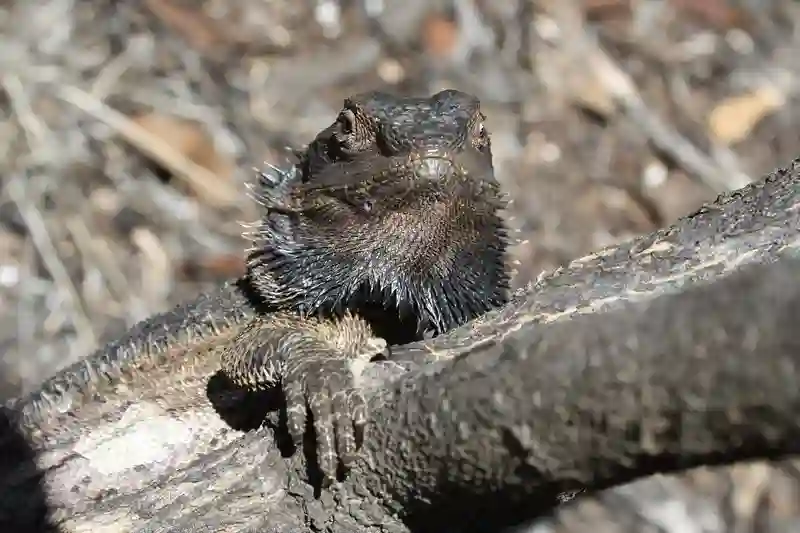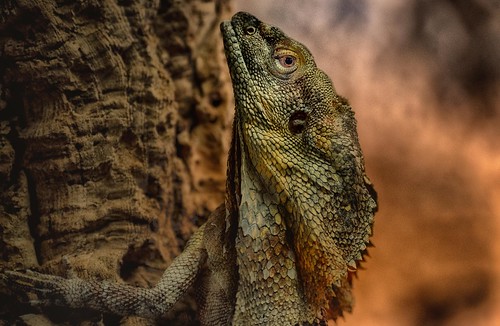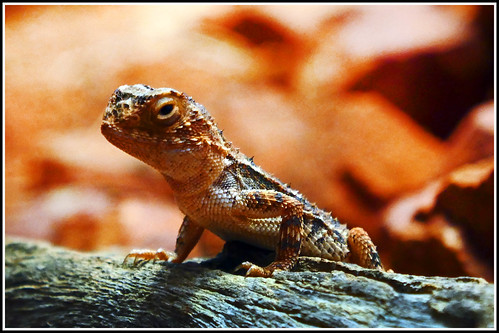It’s important to be aware of the signs of stress in your bearded dragon so you can take steps to help them stay healthy. Stress can be caused by a variety of things and it’s important to recognize the signs so you can take action.
Your bearded dragon’s wellbeing is important to you, so it’s important to recognize when they are feeling stressed. Stress can be caused by anything from a change in their environment to a change in the way you’re interacting with them.
By recognizing the signs of stress, you can take steps to make sure your pet is as comfortable and healthy as possible.
In this article, we’ll discuss the six common signs of stress in bearded dragons and what could be causing them. We’ll also discuss why it’s important to pay attention to these signs and how you can help your pet.
Key Takeaways
- Signs of stress in bearded dragons include loss of appetite, decreased activity levels, darkening of color, and frantically clawing the terrarium’s walls.
- Stress in bearded dragons can be caused by environmental factors, health concerns, and improper care.
- Prevention and treatment of stress in bearded dragons involves adequate heat, lighting, and balanced diet, as well as terrarium enrichment and behavioral modification.
- Recognizing signs of stress in bearded dragons is important for their wellbeing, and proper care and attention can help prevent and reduce stress, leading to a happy and healthy life.
Loss of Appetite
If your bearded dragon suddenly stops eating, that could be a sign of stress, so try offering some treats to see if that helps. If not, check the temperatures in the terrarium! Reasons for appetite loss in bearded dragons can range from dietary changes to picky eaters to dental issues.
Start by offering a variety of food options to see if that helps. If not, it may be time to consult a veterinarian to check for any potential medical causes. They may be able to diagnose any underlying issues that are causing the loss of appetite and provide the necessary treatment.
Be sure to keep an eye on your bearded dragon’s eating habits and don’t hesitate to contact your veterinarian if you have any concerns.
Lower Activity Levels
A bearded dragon’s decreased activity could hint at underlying stress. Behavioral changes in your pet’s activity are often a sign that something’s wrong.
A decrease in activity could be caused by environmental factors, such as inappropriate temperatures or humidity, or health concerns, such as parasites or an infection. Make sure to observe your pet’s behavior and make any necessary diet adjustments, as well as meet their species-specific needs.
Be sure to provide adequate heat and full-spectrum lighting, and a diet that consists of a balanced mix of vegetables and feeder insects. Also, be sure to sprinkle calcium powder with vitamin D3 on each meal.
If you notice problems with your pet’s activity, it’s important to take them to a qualified reptile veterinarian as soon as possible.
Darker Coloration
Seeing a darkening of color can indicate your scaly pal is feeling some pressure. This could be a sign of stress or it could just be a natural part of the shedding process.
Be sure to keep up with temperature control, UV lighting, and hydration needs in order to ensure your pet is comfortable and not feeling stressed. If the darker coloration is accompanied by other behavior changes like lower activity levels, it’s best to take your bearded dragon to a qualified reptile veterinarian to make sure everything’s alright.
Not Basking Enough
You’ll notice your scaly pal spending less time in the basking area, which could mean they’re feeling some pressure. Not basking enough is one of the signs of stress for a bearded dragon, and it’s important to recognize it early.
Possible causes for this behavior could be a lack of temperature regulation, improper lighting, inadequate basking area, or a stressful environment.
To fix this issue, you’ll need to ensure that their environment is as stress-free as possible, as well as that the temperature requirements and lighting are adequate. This also includes making sure the basking area is the correct size and in the right spot.
Behavioral changes can be a sign that your pet is stressed, and since basking is essential for a bearded dragon’s health, it’s important to pay attention to how much time they’re spending in the basking area. If they’re not basking enough, it’s important to take a closer look at their environment to determine the cause.
With the right solutions and the proper temperature requirements, you can make sure that your bearded dragon is living their best life!
Frantically Clawing the Sides of the Terrarium
Observing your pet frantically clawing the terrarium’s walls can indicate that something’s awry. This can be a sign of stress, as the bearded dragon may be seeing its reflection in the glass and thinking there’s another dragon in the area.
To reduce this, you can implement terrarium enrichment, behavioral modification, and environmental factors. This may require some handling techniques, such as using a terrarium background to cover the sides and back of the terrarium.
Additionally, if you notice your pet exhibiting this behavior, check the temperatures in the terrarium and reduce them if needed. This could be a sign of reproductive stress, so it’s important to be aware of the signs and take your pet to a qualified reptile veterinarian if needed.
Stress Marks
Another sign of stress in a bearded dragon is the appearance of stress marks. These dark markings can appear on the belly and chin of a bearded dragon when it’s feeling very stressed.
This is a common occurrence when you first bring your bearded dragon home. Fortunately, the stress marks should go away after it’s had time to adjust to its new home.
It’s important to make sure you’re providing the necessary food, water, and ideal temperature for your pet. If the stress marks are still present after a few days, you should take your bearded dragon to a qualified reptile veterinarian.
They can help you identify the possible causes of stress and provide treatments, such as behavioral changes or medications, to help reduce the stress levels. With proper prevention and treatment, your pet can be living a happy and healthy life.
Frequently Asked Questions
How can I tell if my bearded dragon is stressed?
Look for signs of stress such as loss of appetite, lower activity levels, darker coloration, not basking enough, frantically clawing the terrarium, and stress marks. Consider dietary needs, environmental factors, behavioral interventions, and handling techniques. Observe and be compassionate to identify if your bearded dragon is stressed.
What can I do to help reduce my bearded dragon’s stress levels?
To reduce your bearded dragon’s stress, provide enrichment activities, behavioral modifications, diet changes, temperature control, and keep their habitat clean. Show compassion and be observant, and your dragon will feel safe and happy.
Could my bearded dragon’s stress be caused by something in its environment?
Yes, your bearded dragon’s environment could be causing stress. Noise disturbances, uneven temperatures, humidity fluctuations, unfamiliar objects, and poor nutrition can all be contributing factors. Take time to observe and ensure their habitat provides the best possible conditions for them.
What kind of medical attention should I seek for a stressed bearded dragon?
If your bearded dragon is exhibiting signs of stress, it’s important to seek medical attention from a qualified reptile veterinarian. This is because stress can be caused by a variety of factors, such as temperature fluctuations, environmental changes, feeding patterns, handling techniques, etc. Early detection and treatment will help keep your bearded dragon in optimal health.
How can I tell the difference between normal and stressed behavior in my bearded dragon?
Observe your dragon’s dietary habits, light levels, temperature variations, handling practices, and cage design to determine if they’re exhibiting normal or stressed behavior. Be compassionate and knowledgeable to spot subtle differences in their behavior.



Leave a Reply